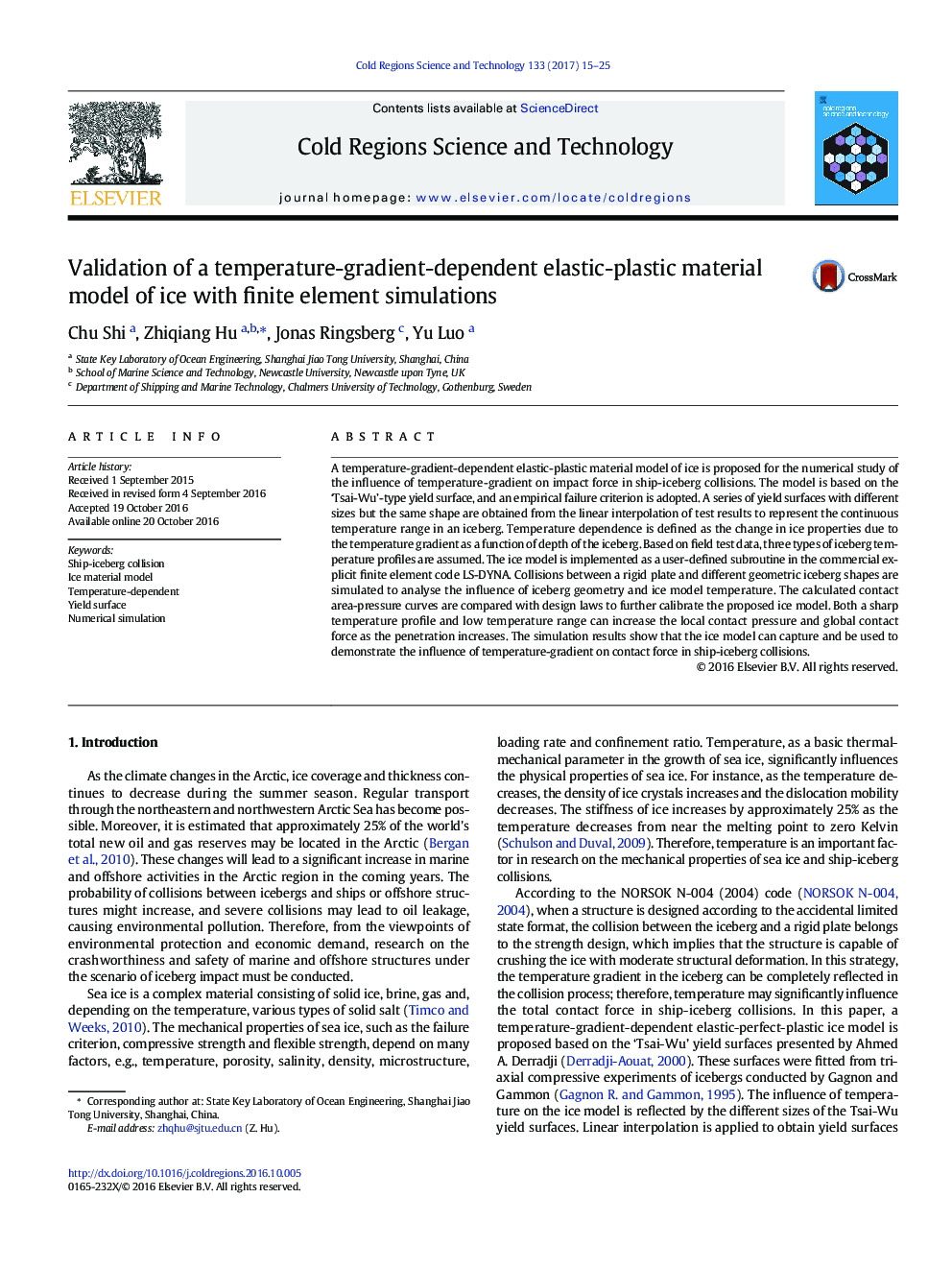| کد مقاله | کد نشریه | سال انتشار | مقاله انگلیسی | نسخه تمام متن |
|---|---|---|---|---|
| 4675568 | 1634431 | 2017 | 11 صفحه PDF | دانلود رایگان |
• A temperature-gradient-dependent elastic-plastic ice material model is proposed for ship-iceberg collisions simulation.
• The model is calibrated by comparison between simulated area-pressure curves and design lows.
• Low-temperature range and sharp temperature profile lead to high contact pressure and high contact force.
• Temperature has a greater effect on highly confined iceberg shapes than on less confined iceberg shapes.
A temperature-gradient-dependent elastic-plastic material model of ice is proposed for the numerical study of the influence of temperature-gradient on impact force in ship-iceberg collisions. The model is based on the ‘Tsai-Wu’-type yield surface, and an empirical failure criterion is adopted. A series of yield surfaces with different sizes but the same shape are obtained from the linear interpolation of test results to represent the continuous temperature range in an iceberg. Temperature dependence is defined as the change in ice properties due to the temperature gradient as a function of depth of the iceberg. Based on field test data, three types of iceberg temperature profiles are assumed. The ice model is implemented as a user-defined subroutine in the commercial explicit finite element code LS-DYNA. Collisions between a rigid plate and different geometric iceberg shapes are simulated to analyse the influence of iceberg geometry and ice model temperature. The calculated contact area-pressure curves are compared with design laws to further calibrate the proposed ice model. Both a sharp temperature profile and low temperature range can increase the local contact pressure and global contact force as the penetration increases. The simulation results show that the ice model can capture and be used to demonstrate the influence of temperature-gradient on contact force in ship-iceberg collisions.
Journal: Cold Regions Science and Technology - Volume 133, January 2017, Pages 15–25
